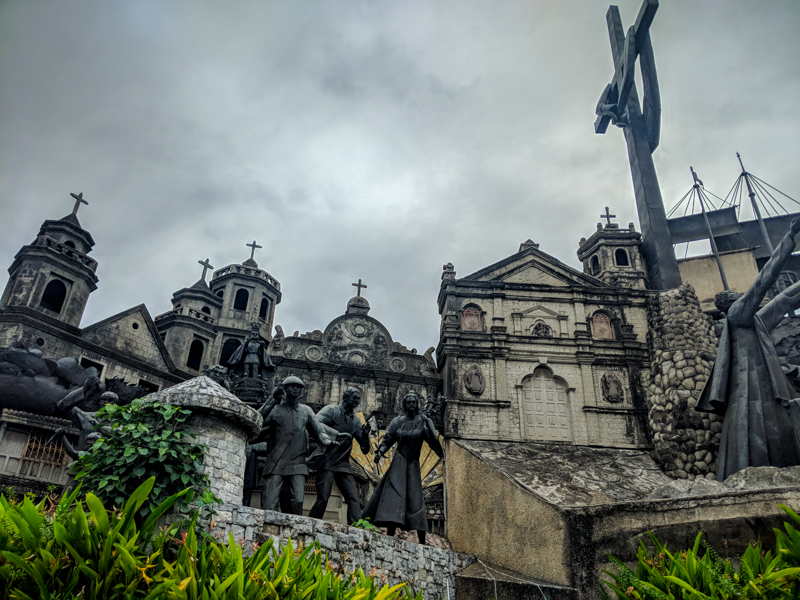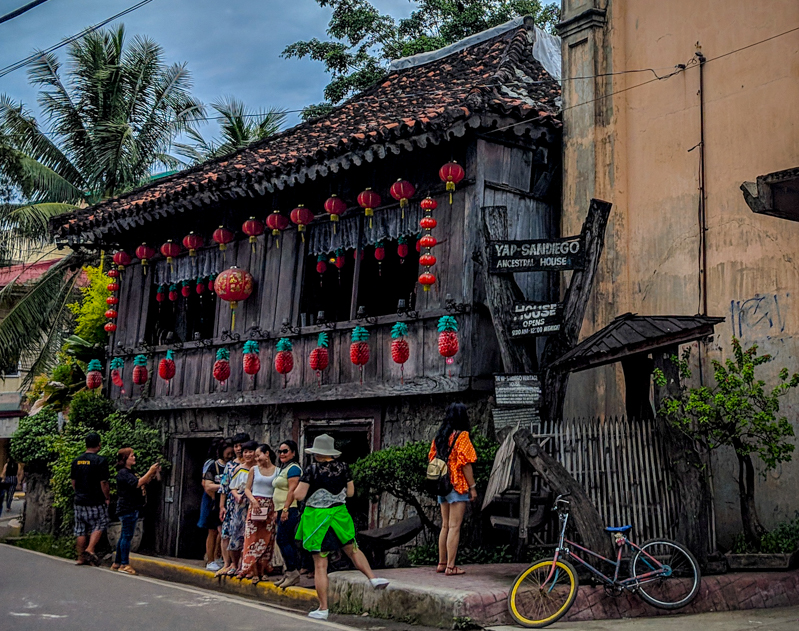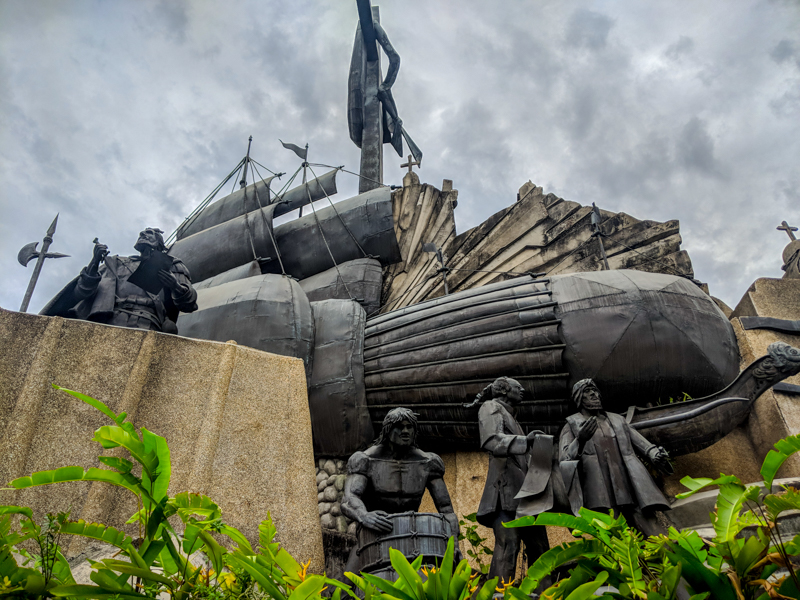A Historical Look at Cebu

“Where are you from?”
This is a question I often got back in the United States, and most people were satisfied with the response, “My parents are from the Philippines.” In the Philippines, however, the question takes on a whole new life.
Both of my parents are from Cebu, though my dad is half Chinese. Every single person I’ve talked to was able to tell off the bat that I’m not full Filipino, which surprised me because as an American, I’ve never considered myself multi-ethnic. Word to the wise, though, you shouldn’t consider Filipinos and Chinese the same. They are definitely not the same.
Anyway, since the majority of my family is from Cebu, I spent a good portion of my three weeks in the Philippines on the island of Cebu, with short trips to Palawan, Negros, and Bohol (as indicated by the hot pink color in the map below).

My time in the Philippines ended up being a fusion of local and tourist experiences. During a three hour van ride to the airport, a French traveler asked for recommendations for places to go to in Cebu. To be honest, most of my Cebu experiences were hyperlocalized, but if you’re looking for something in Cebu that you won’t find anywhere else in the Philippines, history is where it’s at.
Trip Duration: I spent 3 weeks in the Philippines, with a little over a week in Cebu, though 2 days is really enough time to see what you need to see (1 day for history, 1 day for a trip to Oslob and Kawasan Falls)
Accommodations: N/A (I stayed with family)
Goals: Gain an understanding of Philippine history and culture
History
When people talk about Philippine history, it tends to start in 1521 when Ferdinand Magellan stumbled upon the islands and declared it a colony of Spain. However, people have inhabited the islands since before then, with the earliest discovered human remnants dating back to 67,000 years ago.
There’s no confirmed origin point of the original inhabitants of the Philippine Islands, but the most popular theory seems to be Taiwan, due to the vast amounts of Taiwanese jade artifacts recovered dating back to 2000BC. Regardless, the location of the Philippines made it a hot bed of trade between Malaysia, Java, China, Vietnam, Japan, China, and other Austronesian islands.
Among the first lines of political development were by Muslims of the south in Mindanao and Sulu. Historians say that had the Spanish not colonized the islands, Islam could very well be the majority religion of the area, but thanks to Magellan, King Phillip II, and their crew, the Philippines has strong ties to Spanish culture and is one of two Christian countries in Southeast Asia (the other being East Timor).
All of this is to say that when you tour historical monuments in Cebu City (the first island Magellan discovered), you’re gonna get a lot of information on Spain and the Roman Catholic Church. When the Spanish colonized the islands, they went hard.
(Side note: After the Spanish American War in 1898, the Philippines were ceded to the U.S. as part of the Treaty of Paris. I’m a bit sketchy on the details with what happened between then and after World War II, when the Philippines was recognized as an independent nation, but I’ll get back to you on that.)
Visiting the following historical sites in Cebu can be done in an afternoon:
Fort San Pedro
The current structure of Fort San Pedro was built in the 1700s to protect against Muslim raiders. There’s a small photographic exhibit and museum inside the fort that gives a good overview of the history of the Spanish colonization of the Philippines.
Basilica del Santo Niño and Magellan’s Cross
The Basilica del Sto Niño is the site in which Magellan christened the land of the Philippines. The original cross is actually encased within tindalo wood, as pictured above. The church holds several services in multiple languages each day. When we visited, they were holding a Filipino service, so it was a bit crowded.
Inside the church is a small museum dedicated to Sto Niño, a relic of the child Jesus that was gifted to the rajah of Cebu, Rajah Humabon and his wife, by Magellan. The original can actually be seen in the museum as well. Sto Niño is an icon that appears throughout the Philippines in places of worship even in present day.
Heritage of Cebu Monument
The Heritage of Cebu monument was actually my favorite historical site because of the awesome sculptures of brass, steel, bronze and concrete depicting the history of Cebu. Created by Eduardo Castrillo, the monument highlights important Cebuano landmarks, battles, and politicians throughout its history.
Yap-Sandiego Ancestral House

The Yap-Sandiego Ancestral House is one of the oldest standing structures in Cebu. Built in the 18th century by a Chinese businessman, the house has been owned by the same family, handed down through generations. At some point someone in the Chinese bloodline married a Filipino, so the house is now owned by Filipinos, but it it was pretty cool to go through the house and see the cultural fusion of Chinese, Spanish, and Filipino artifacts.



Cebu Taoist Temple

The Cebu Taoist Temple was built in 1972 by the Chinese as a place of worship. It’s open to practicing Taoists and non-Taoists alike and has a pretty good view of the city.


So as I said, cultural melting pot. This may not be the most interesting part of the Philippines for those coming here for the beaches and island hopping (as I clearly learned as I started talking to my French acquaintance about things to do in Cebu on that three hour van ride), but as a Filipino Chinese American, it was very informative.









